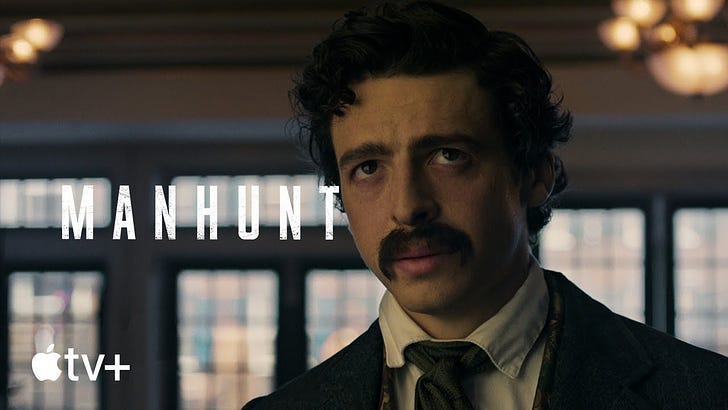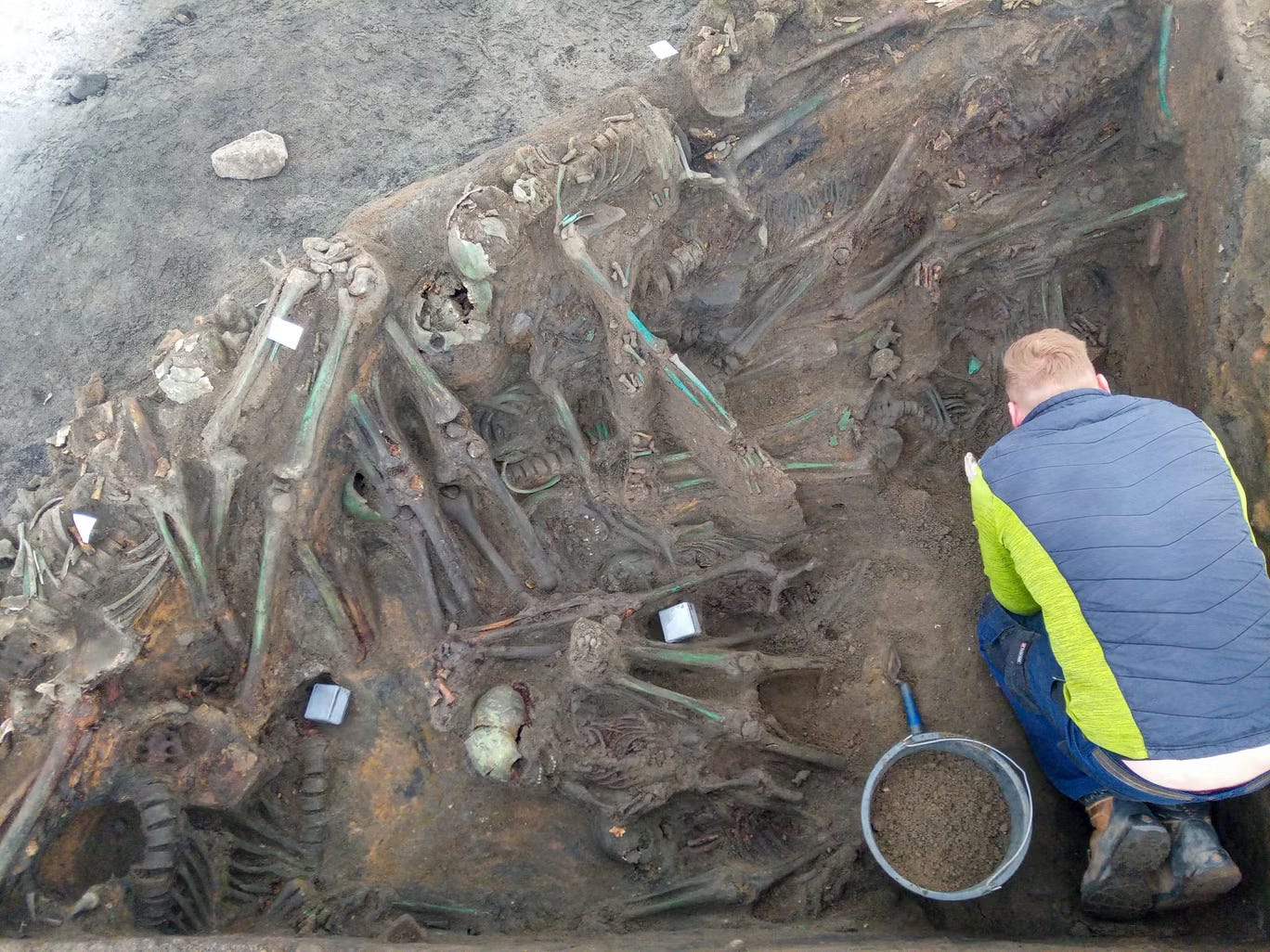On Our Radar: Manhunt - The Search for Lincoln's Killer
We review Apple TV's latest historical drama and look at history making the news
MANHUNT: THE HUNT FOR ABRAHAM LINCOLN’S KILLER
It’s one of the most famous moments in modern history. On 14th April 1865, the 16th President of the United States, Abraham Lincoln, was shot by actor turned assassin John Wilkes Booth while watching Our American Cousin at Ford’s Theatre, Washington D.C. Witnesses told how Booth waited for the funniest line of the play to be delivered so that the gunfire would be masked by laughter. After firing, Booth stabbed Major Henry Rathbone and then jumped onto the stage, shouting “Sic semper tyrannis” (“thus always to tyrants”) to a stunned audience, before managing to escape. Lincoln died the next day.
It is here that the famous tale tends to end. The story of the hunt for John Wilkes Booth and his accomplices is less well known, but ripe for the telling. Enter Apple TV’s glossy new series, Manhunt, Starring Tobias Menzies (Outlander, The Crown) as Edwin Stanton, the Secretary of War who personally oversaw the search for John Wilkes Booth - played with delicious narcissism by Anthony Boyle (Masters of the Air).
Released on Friday 15 March, Manhunt is genuinely gripping in parts, with enough twists and turns to keep viewers hooked and real moments of shock and sadness. Across seven episodes we follow Stanton’s pained hunt for Lincoln’s killer as Booth leans on confederate spies and sympathizers to evade capture. Set against the backdrop of the Civil War, the series is peppered with flashbacks, which show the delicate nature of the peace and allow us into the complex relationship between Lincoln (Hamish Linklater) and Stanton. We also meet formerly enslaved housekeeper, Mary Simms (a magnetic performance by Lovie Simone), whose vital perspective and experience is so often missed in the telling of the consequences of the assassination. One criticism is that it does sometimes drag and you get the sense that it might have benefitted from taking a chronological approach to the story rather than relying on so many flashbacks.
Nevertheless, there is a lot to like. Unlike the continuous churn from a lot of streamers, Apple TV is carving out an admirable niche in creating a high quality boutique of prestige dramas, and Manhunt is no exception. It is a big story about a big historical figure, but one of the standout features of the show is the 'smallness' of action, and this is not a criticism. Advances in CGI mean we're so used to seeing significant historical events super-sized, but in Manhunt the world is contracted, and all the better for it.
When John Wilkes Booth pulls the fateful trigger in Ford's Theatre, we not only get a striking sense of the proximity of the audience to the fatal gunshot, but also of how vulnerable the president was to an attack at this crucial time. When the various government officials debate what to do should he die, Lincoln is there in bed with his head oozing blood and brain onto the pillow - it's so raw and rancid that you can almost smell it. The rooms of the White House are small, almost claustrophobic, and functional, and Lincoln’s widow's clothes rumple with the weight of heavy rain as his decomposing corpse makes a ragged tour cross-country. Manhunt is domestic and authentic in a way that is very refreshing. It reminds us that history is driven by real people navigating their own present, and not one-dimensional ‘good guys’ and ‘bad guys’ on a linear journey to now.
NEW DISCOVERY - PLAGUE IN GERMANY
This week has seen an exciting discovery in Southern Germany. In preparation for the construction of residential buildings in Nuremberg, archaeologists have unearthed a staggering 1,000 skeletons in eight burial pits, which are believed to be early modern plague victims. The find is especially interesting because at least some of the remains are thought to date to an outbreak of plague in 1632-1633, which killed more than 15,000 people.
Like many places in Central Europe at the time, Nuremberg was affected by food shortages, pillaging and disease as the Holy Roman Empire engaged in what we now call the Thirty Years War. Starting in 1618 and lasting until 1648, the complex war was rooted in power struggles between the Spanish / Austrian Habsburgs and the French Bourbons, and fueled by clashes between Catholicism and Protestantism. The impact was devastating, with some estimating that between four and eight million people died. Indeed, it is believed that what is now modern-day Germany suffered a population decline of up to 50%, with plague being a significant factor.
It is not clear if DNA analysis has confirmed this yet, but DNA analysis of similar finds at the Crossrail site in London in 2015 confirmed the presence of the plague bacterium, Yersinia pestis. Excavations are ongoing but researchers believe there could be as many as 1500 people buried at the site.
HISTFEST 2024 - JUST A MONTH TO GO!
13-14 April - British Library and Online
A reminder that HistFest 2024 is now only a month away. We only have a handful of in-person weekend tickets available. But there is still time to grab day passes, and tickets to individual events. Obviously, there is no limit to the number of online tickets available. We hope to see you there!









